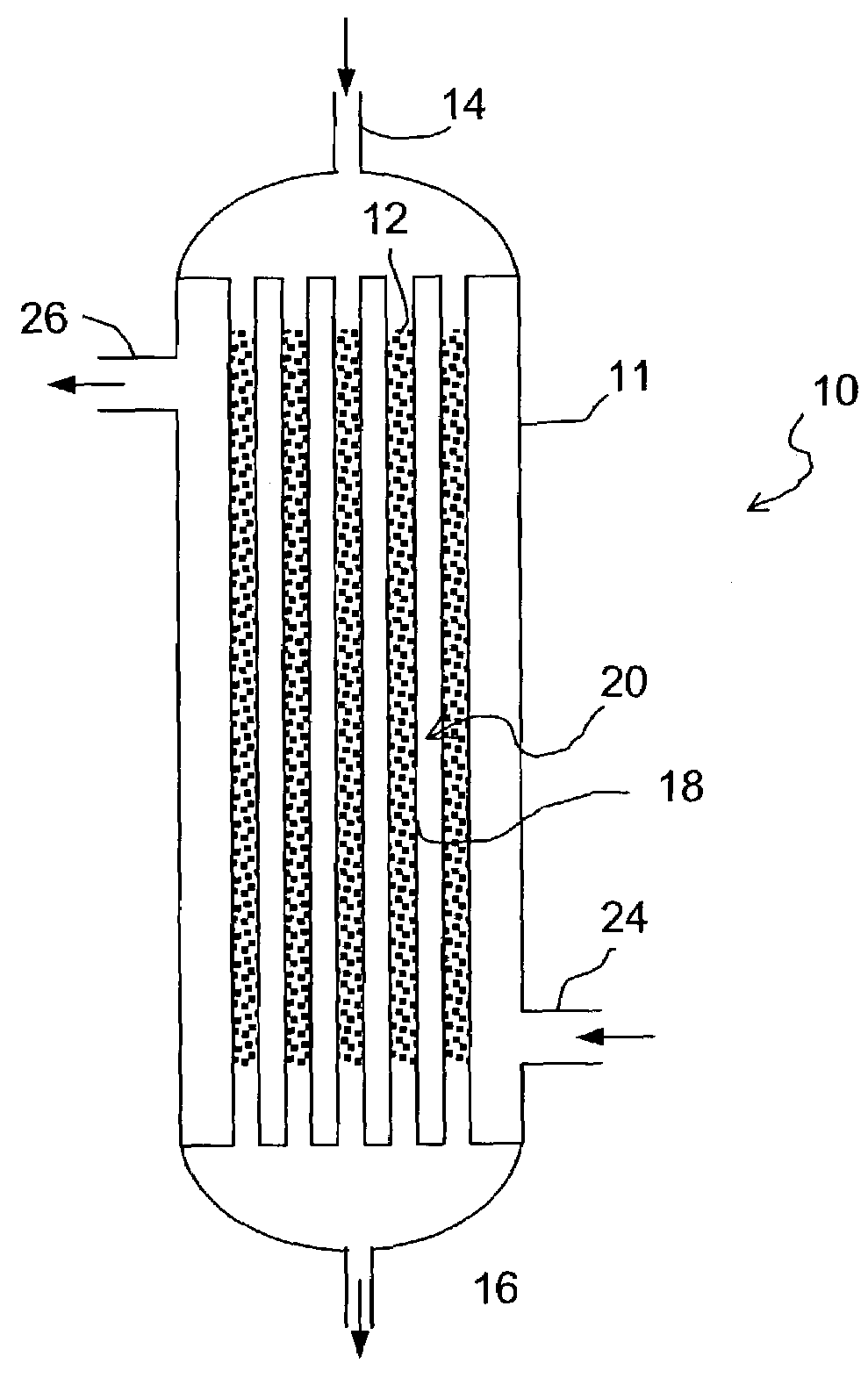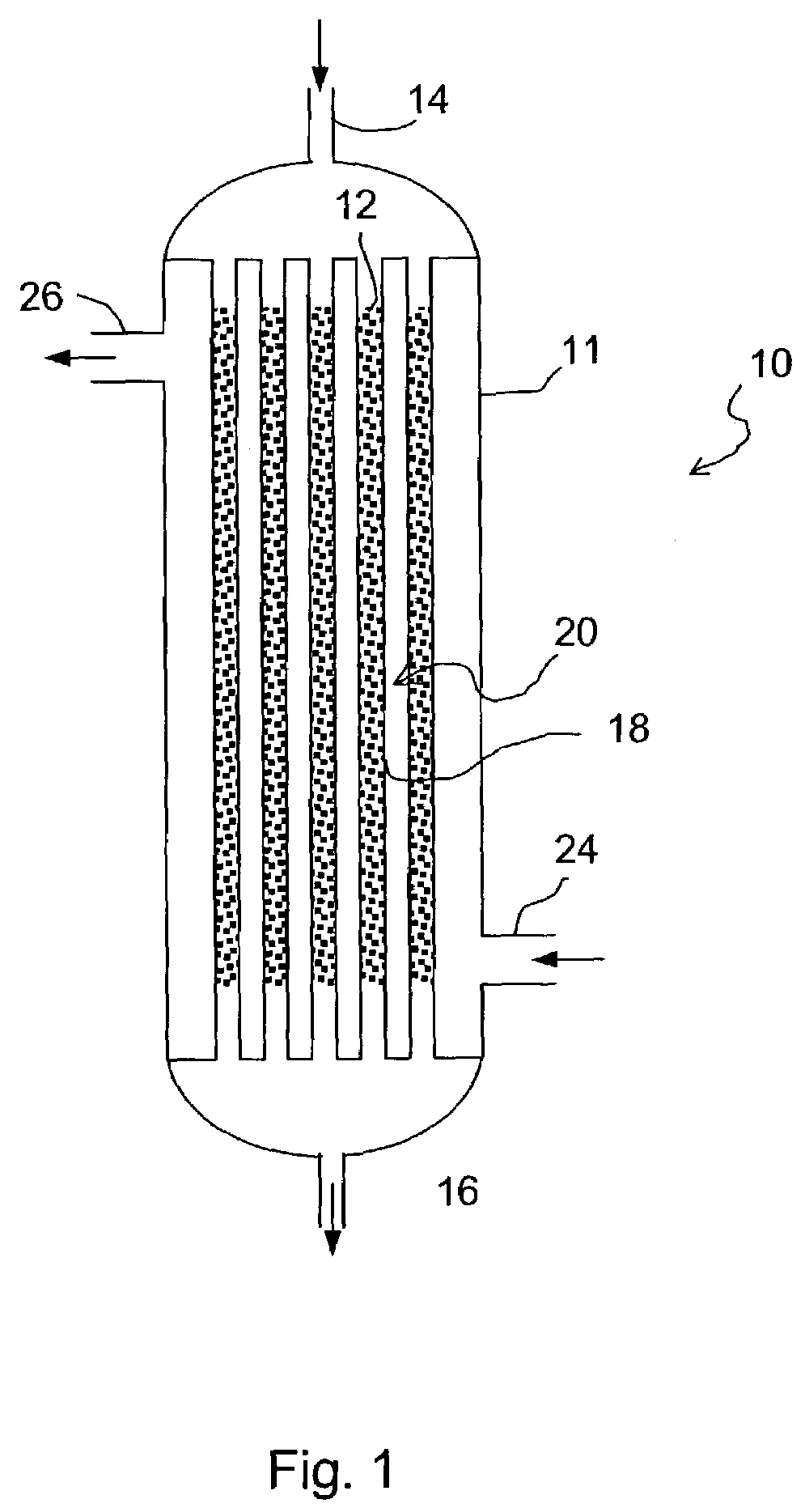Commercial fischer-tropsch reactor
a fischertropsch reactor and commercial technology, applied in the direction of physical/chemical process catalysts, metal/metal-oxide/metal-hydroxide catalysts, gas-gas reaction processes, etc., can solve the problems of decreasing the overall conversion and volume productivity transportation presents technological challenges, and natural occurring sources of crude oil used for liquid fuels such as gasoline and middle distillates, etc., to achieve high overall conversion and volume productivity
- Summary
- Abstract
- Description
- Claims
- Application Information
AI Technical Summary
Benefits of technology
Problems solved by technology
Method used
Image
Examples
example i
[0036]A reactor constructed in accordance with the present invention was modeled using the following parameters:
[0037]
superficial gas velocity:22.8 cm / sH2 / CO at inlet:2N2 mole fraction at inlet:8.3%inlet temperature:215° C.cooling side temperature:215° C.operating pressure:400 psigsuperficial velocity of circulating liquid:0.01 m / s
Using these parameters, the maximum uniform catalyst loading allowed by the model while still avoiding temperature runaway was 2.4 times the maximum loading allowed for a model of a conventional reactor system operating under the same conditions.
[0038]Based on modeling data, it is believed that a Fischer-Tropsch reactor system according to this invention can have a hydrocarbon productivity such that the yield of hydrocarbons in each tube in the reactor is greater than 100 (kg hydrocarbons) / hr / (m3 reaction zone) and more preferably is greater than 150 (kg hydrocarbons) / hr / (m3 reaction zone).
[0039]As mentioned above, in some instances the optimum reactor per...
PUM
| Property | Measurement | Unit |
|---|---|---|
| height | aaaaa | aaaaa |
| height | aaaaa | aaaaa |
| superficial velocity | aaaaa | aaaaa |
Abstract
Description
Claims
Application Information
 Login to View More
Login to View More - R&D
- Intellectual Property
- Life Sciences
- Materials
- Tech Scout
- Unparalleled Data Quality
- Higher Quality Content
- 60% Fewer Hallucinations
Browse by: Latest US Patents, China's latest patents, Technical Efficacy Thesaurus, Application Domain, Technology Topic, Popular Technical Reports.
© 2025 PatSnap. All rights reserved.Legal|Privacy policy|Modern Slavery Act Transparency Statement|Sitemap|About US| Contact US: help@patsnap.com



